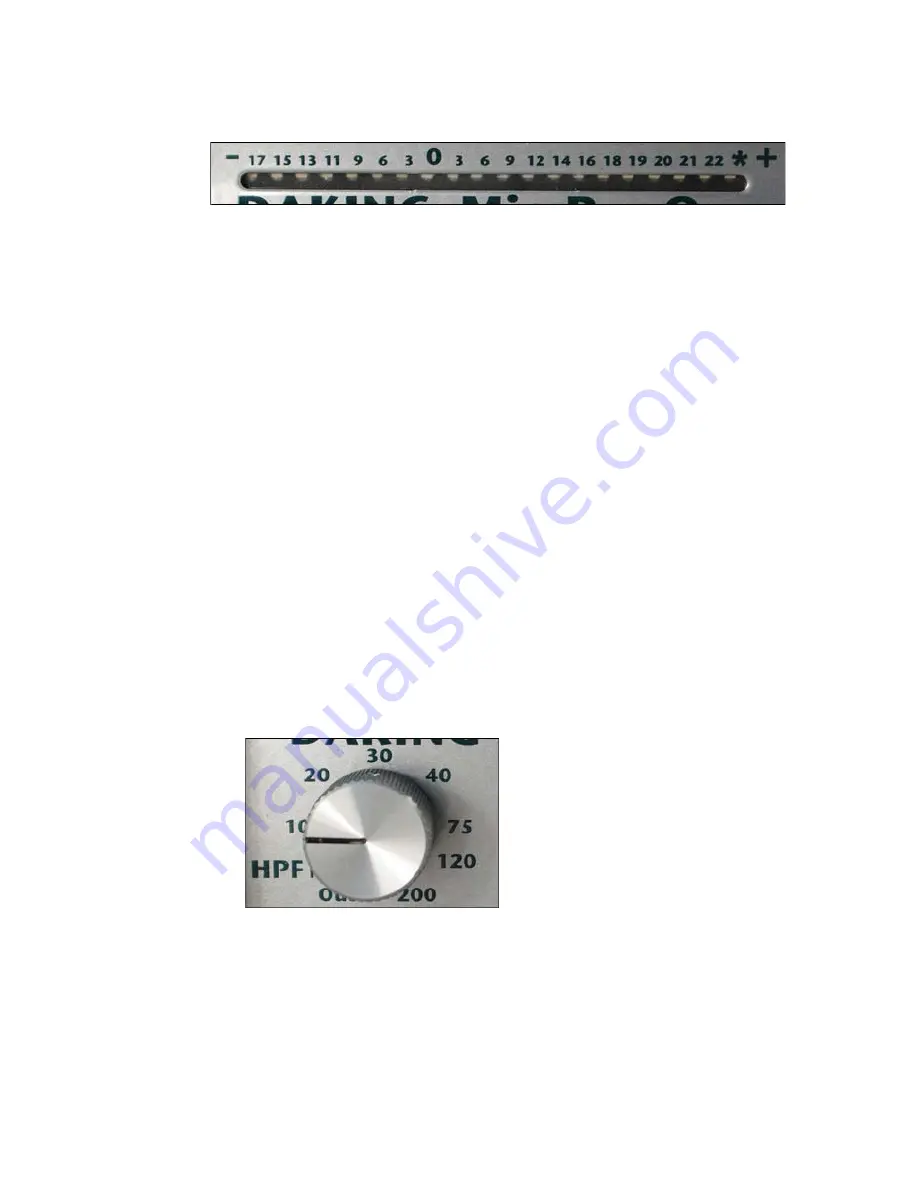
7
1.5.1 LED VU and Peak Meter
The VU Meter for the Mic Pre One is a true VU Meter with 300ms
averaging ballistics. The main difference between this meter and a
mechanical VU meter is that this meter extends to +22dB, while a
mechanical meter only goes up to +3dB. This feature allows the engineer
to see level with much greater accuracy and detail above +3dB.
The highest point on the meter is labeled with an asterisk (*) which is the
peak indicator. When this LED is lit, the signal has reached or exceeded
26dBu. Most audio interfaces will clip at +18dBu, while most
professional mixing consoles will clip b24dBu to +30dBu.
VU Meters measure the RMS (Root Mean Square) of an audio signal.
Often the RMS is considered to the “continuous” level of the signal. A
PPM (Peal Program Meter) measures the signal much more quickly and
keeps track of the absolute value of the greatest voltage in the audio
signal. This is why the Peak Indicator (*) can be lit when the VU meter is
showing a much lower signal. The peaks of an audio signal are much
higher than the RMS of the audio signal.
NOTE:
While most VU meters are calibrated to 0dB VU = +4dBu, this
meter is in fact a true dBu meter where 0dB on the meter is in fact 0dBu.
This means that when the Mic Pre One’s VU meter is reading 0dB and
you patch into another standard VU meter directly from the mic pre, you
will show a reading of -4dB.
1.5.2 The HPF (High Pass Filter) Knob
Why do we need it?
In the olden-timey days (or even now
if you can afford it!) we recorded
audio on magnetic tape which isn’t
good at reproducing very low
frequencies. Tracking at 30 IPS
(Inches Per Second), frequencies
below 40 Hz were severely
attenuated and even at 15 IPS,
frequencies below 20 Hz were attenuated. Digital equipment happily
records frequencies ranging from 40 Hz all the way down to DC.
There are a number of problems with tracking these low and unwanted
frequencies. In a major studio that has been acoustically isolated and has
wonderful full-range monitors, these very low frequencies don’t often
make it into microphones and if they do you can hear them with the












